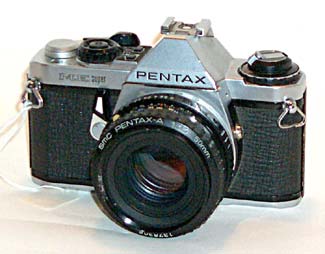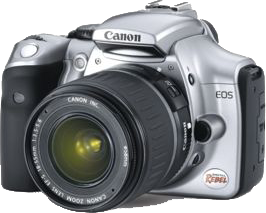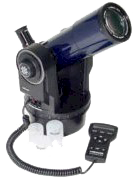

I purchased my first camera when I was six, at a garage sale. It was a fixed focus TV Guide branded 35mm fully mechanical camera. A few years later I moved up to a used Pentax ME Super SLR which came with a 50mm prime. For Christmas that year my parents gave me a 75-200mm zoom.
Over the years I acquired various pieces of equipment, the most important of which were a cable release and a set of three closeup filters.
Though my trusty Pentax served me for years (and may still be used for long exposures), the release of the Canon Digital Rebel spurred my move to digital in the fall of 2003.

Currently I shoot with a DRebel, kit lens, Canon 75-300mm, Canon 50mm F1.8 prime and Canon 28-105 F3.5-4.5. In addition I use a set of three extension tubes, IR remote shutter release and polarizing filter. I have two bags, a Lowepro Micro Trekker 200 backpack (which is great on planes and car trips) and a Lowepro Toploader Zoom AW which I can use while hiking or throw right inside a trekking backpack. The TLZ bag is large enough to hold the camera body, two lenses and accessories, so it does mean leaving a couple of lenses at home.
My tripod, made by Slik is light enough I can carry it in a backpack without noticing, but stable enough to take long exposures and panoramas. Unfortunately I can't find any reference to the particular model so I can't post a link. I also have a panoramic adapter (fits on the regular ball head) that I've been meaning to try. Lately I've had to handhold all my panormas though!

Finally, for astrophotography my DRebel (when not on it's tripod) sits at prime focus or piggybacked on my Meade ETX 60AT telescope. The 60AT isn't a large scope, but it does have Alt/Azimuth tracking. I use my Apple Powerbook to control both the camera and scope. This is a great setup, especially in the winter. Set up, tell the computer how many exposures to shoot, then crawl into a sleeping bag to have a nap (and keep warm) while waiting.
Unfortunately, the Alt/Az tracking on the ETX means the field will rotate with time. This rotation (and any tracking errors) must be removed before the images can be stacked. I'm currently investigating using the SIFT algorithm to locate keypoints in order to register astrophotos.